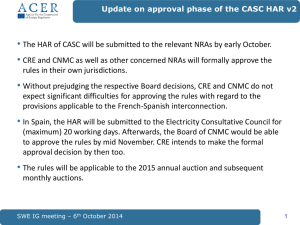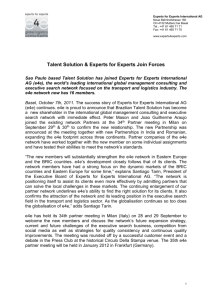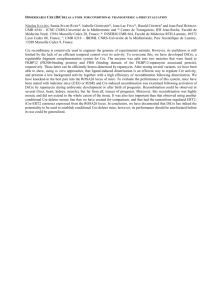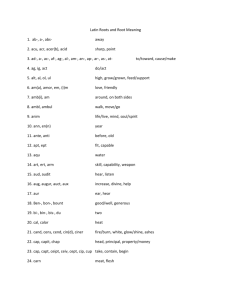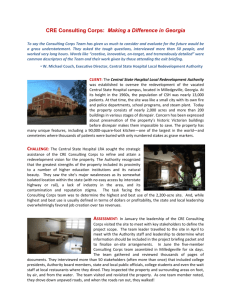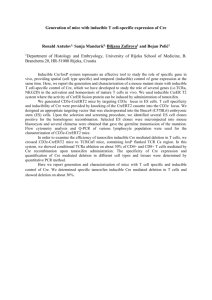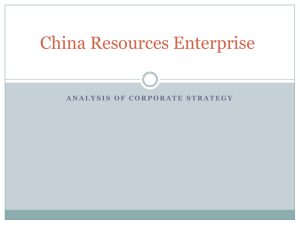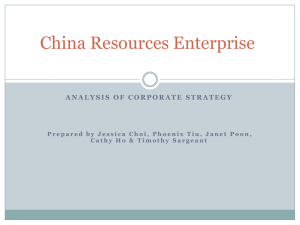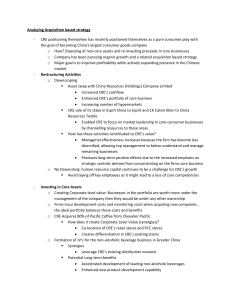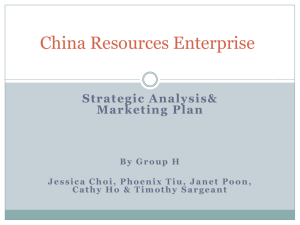China Resources Enterprise
advertisement
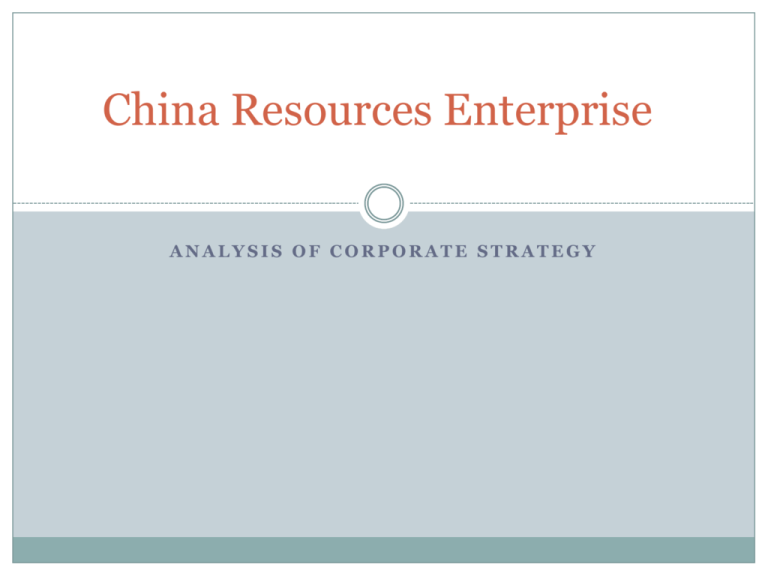
China Resources Enterprise ANALYSIS OF CORPORATE STRATEGY Problem Recently restructured companies assets Low margins CRE operating margin: 1.5% (2009 FY) Sector average: 3.1% Desire from investors for higher profit margin Acquisitions currently a very important part of CRE’s strategy Problem CRE has yet to improve its margins through an acquisition based strategy Should CRE continue acquisition based growth strategy or focus on fine-tuning their core business against the risks? Beer Analysis Beer Retail Analysis Retail Beverage Analysis C’estbon C’estbon means ‘it is good’ in French 3 product lines: purified water, mineral water and nutrition fruit juice Bottled water is famous for its safety Enjoys a leading position in Guangdong province Fruit juice ‘O PA’ is the first stress-relieving drink in mainland Satisfies the need of specific segment of customers Beverage Analysis Pacific Coffee Acquired by CRE in 2010 Provides great quality coffee and beverages, a comfortable environment and plenty of complementary food choices Provides addition value by pay attention to every details Targets customers with higher income Beverage Analysis Five Forces Rivalry with existing competitors “C’estbon”: Master Kong, Wahaha, Coca-Cola and Nestle Pacific Coffee: Starbucks and Gourmet Maste Bargaining power of customers “C’estbon”: Low Pacific Coffee: High Bargaining power of suppliers Pacific Coffee: High Potential Entrants China beverage industry is attractive to the potential entrants Product Substitutes Carbonated drinks, energy drinks and tea Food and Processing Distribution Analysis Food and Processing Distribution Acquisition-Based Strategy Value Creating Drivers Pursuit of Market Power Learn and Develop New Capabilities Pursuit of Market Power CRE has potential to further increase market power as a result of their related linked strategy Proper execution will allow CRE to reduce the costs of its primary and support activities CRE can further employ vertical integration via vertical acquisitions Pursuit of Market Power Vertical Integration Food, beer and beverage divisions provide inputs for CRE’s retail business segment CRE can increase their market power using an integrated model R&D, processing & distributing, storage, wholesaling, retailing Limitations of vertical integration Outside supplier may produce the input at a lower cost Changes in consumer demands create capacity imbalance and coordination problems Pursuit of Market Power Horizontal Acquisitions CRE can integrate its own assets that complement their core competency Key driver to top-line growth and market share Ex. Strengthening retail position by acquiring supermarkets Expand geographical coverage in the northern and central areas of mainland China Help CRE further establish its network of primary activities Ex. CRE recent push to acquire breweries in these locations Learn and Develop New Capabilities Goal: Develop and exploit economies of scope between CRE’s businesses Broaden knowledge base and leverage CRE’s core competences Create value by pursuing Operational and corporate related acquisitions Learn and Develop New Capabilities Acquisitions to create operational relatedness CRE can leverage its existing primary activities Distribution systems Sales networks Also facilitate their support activities Purchasing practices Bargaining power Has potential to improve existing profit margin Increased revenues Decreased costs Learn and Develop New Capabilities Limitations to acquisitions to further operational relatedness Organizational integration may fail to create synergies Success is dependent on CRE’s ability to integrate acquisitions into a cohesive structure that will allow sharing of activities to take place efficiently Important that HQ implements controls to foster sharing of activities between related divisions Learn and Develop New Capabilities Enhancing corporate relatedness through acquisitions Transferring CRE’s core competences to an acquired business CRE has expert local market knowledge and a sophisticated distribution system Transferring core competences of core business to CRE Possible targets should include companies that can transfer cost saving related core competences to CRE Learn and Develop New Capabilities Downside of pursuing a combination operational relatedness and corporate relatedness acquisition based strategy Cost of organization and compensation structure could be expensive leading to further decrease in CRE’s profit margins Risks of Acquisition Based Strategy Integration Challenges Financial systems Control systems Building effective working relationships Risks of Acquisition Based Strategy Inability to achieve synergy Ideally want acquisitions to create economies of scope and share resources to benefit the company Must focus on rational evaluation of private synergies Business is worth more managed by CRE than by itself Transaction costs Due diligence fees (lawyers, investment banks, accountants, etc) Managerial time to evaluate target firms, complete transaction Transaction costs < expected synergies Risks of Acquisition Based Strategy Too much diversification CRE could begin to rely on acquisition activities to replace innovation Managers may focus solely on financial performance of a business segment rather than strategic controls to evaluate business performance CRE may be getting to big Managers may implement more bureaucratic control to manage combined firm’s operations Hinders innovation Risks of Acquisition Based Strategy Managers overly focused on acquisitions Large managerial cost associated with acquisitions Searching for viable acquisitions Completing due diligence process Preparing for negotiations Managing the integration process Diverts attention from other matters that are necessary for long-term competitive success, such as identifying ways to drive cost-efficiencies Recommendation
